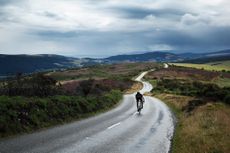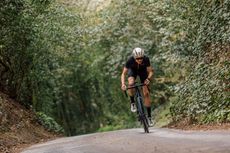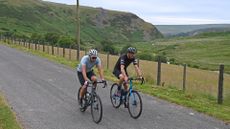How to train for your first 100-mile ride: 3 tips and a structured plan for success
Cycling coach Zach Nehr explains how to use a structured training plan to prepare for a 100-mile ride
- (opens in new tab)
- (opens in new tab)
- (opens in new tab)
- Sign up to our newsletter Newsletter
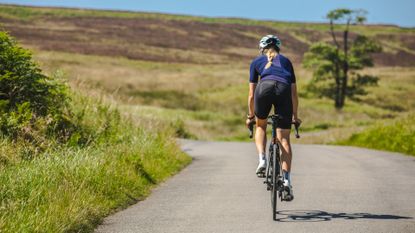
It is a common myth in cycling that you need to ride 100 miles before you can complete a 100-mile sportive. If you’ve never tackled that distance before, then your body won’t be ready for it, the saying goes. But this suggestion is completely false – we break our own barriers all the time. It’s how we set PRs, or ride longer than we ever have before. And that is why training for a 100-mile sportive is mostly a matter of planning, and you don’t need 20 hours a week to do it.
When you picture a 100-mile sportive, what images or feelings come to mind? Endless suffering, pedalling squares, or the dreaded hunger flat? Or smashing the pedals all day, nailing your nutrition strategy, and beating your personal best by 20 minutes?
Here, we are going to help you realise the latter. That is, not just completing a 100-mile sportive, but absolutely smashing it.
When training for a 100-mile sportive, there are a few key areas to focus on: specific intervals, progressive overload, and long-distance rides all within a structured training plan. Let’s dive into it.
1. Train for the 100 mile ride that you're planning
One of the most important concepts in athletics is sport-specific training. It is why swimmers swim, runners run, and cyclists cycle. You never see Tadej Pogačar training in the pool, or Peter Sagan on the football pitch. The same principle applies to specific training within sports – track cyclists train their sprint, Tour de France hopefuls train on hour-long climbs, and Classics riders train for 2-5 minute cobblestone efforts.
What are training zones?
We've used 'training zones' to explain how hard your efforts should be during training, we've gone into detail about these in our dedicated article on cycling training zones.
You can train in zones using power, heart rate, or feel.
If you use power, your zones will be set as a percentage of your functional threshold power (FTP). If you use heart rate, they'll be based on a percentage of your threshold heart rate (THR). Using feel is the simplest guage, that's based on 'rate of perceived exertion' (RPE), where 0 is resting and 10 is as hard as you can go.
For the purpose if this article, you need to know that Zone 2 is easy - 55-75% of FTP, 85%-89% of THR, or 2-3/10 in RPE.
Sweetspot efforts are 88-94% FTP, 93-96% THR or 6-7/10 RPE.
Theshold efforts are 98-103% FTP, 98-100% THR, or 8/10 in RPE.
We've also talked about cadence in this article. This is measured in 'revolutions per minute' (RPE) and refers to your number of pedal strokes per minute.
When training for a 100-mile sportive, you need to know as much as possible about the course and the demands it will place on you as a cyclist. A flat route will require long and sustained efforts for multiple hours, whereas a hilly route will require more on/off type efforts of a few minutes in duration. A mountainous route, on the other hand, means that you will be riding quite hard for a very long time (20-90 minutes), with long periods of recovery on each descent.
Know the course and you will know how to train. If your upcoming sportive is completely flat, focus on long Zone 2* (see 'What are training zones' box-out for details on this effort level) rides once or twice per week, building up to 75% the length of your goal event - we suggest basing your 75% on time, not distance. So, if you expect the ride to take you six hours, try to build up to being able to ride 4.5 hours. The extra 90 minutes will be perfectly achievable once you add in event-day excitement, and if there are other riders around, the benefit of drafting - which means saving energy by sitting in a pack.
For hilly or mountainous sportive routes, you're going to need to include some harder interval efforts to help you improve your climbing, and limit the stress the inclines put on your body. Focus on Threshold and Sweet Spot intervals (see 'What are training zones' box-out for details on effort levels), these are usually ridden over 20 to 30 minutes, and it's ideal if you can practice on a climb.
2. Use 'progressive overload'
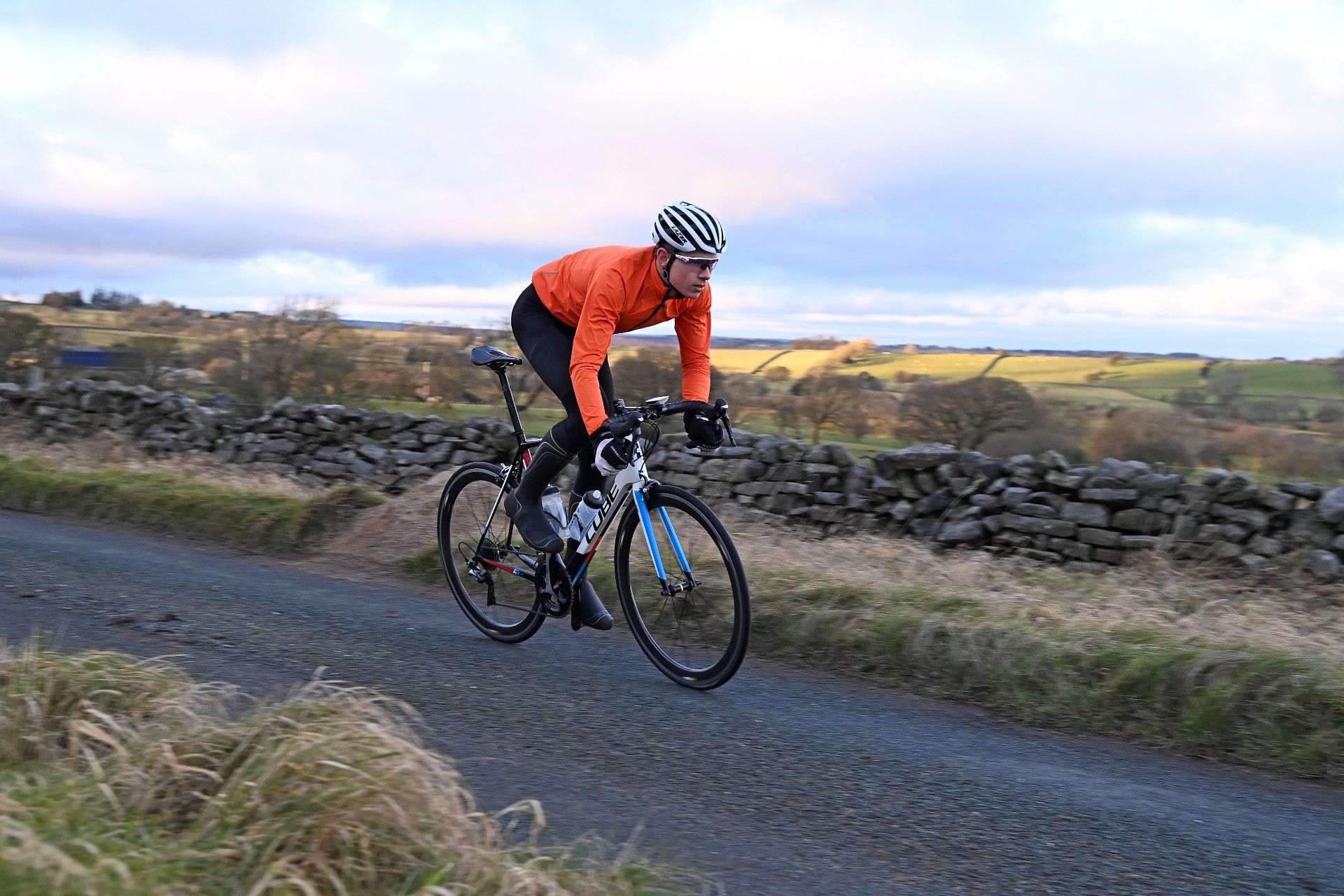
Speaking of important training concepts, progressive overload is a principle that permeates throughout more than just endurance sports. In fact, this term is more often used in the gym for strength training athletes.
Progressive overload is the idea that you need to overload the body with training in order for it to become stronger. In other words, you need to increase your training volume, load, or intensity (or a combination of the three) in order to improve. Once your body is adapted to a given stimulus, you won’t improve unless you increase your training.
In training for a 100-mile sportive, the concept of progressive overload should be applied to your weekly training volume and your longest ride of the week. For many of us, our work and home lives mean that our weekly training volume is fixed - if that's you, then you can increase the stress produced by your high intensity intervals by lengthening the intervals and decreasing the recovery, or, increasing your output during those intervals, allowing you to squeeze more fitness out of the same amount of training hours.
However, the most important day of the week will be your long endurance ride. The successful execution of these rides week in and week out could be the difference between smashing your 100-mile PR and bonking at Mile 60.
3. Make sure your endurance rides are REALLY endurance rides
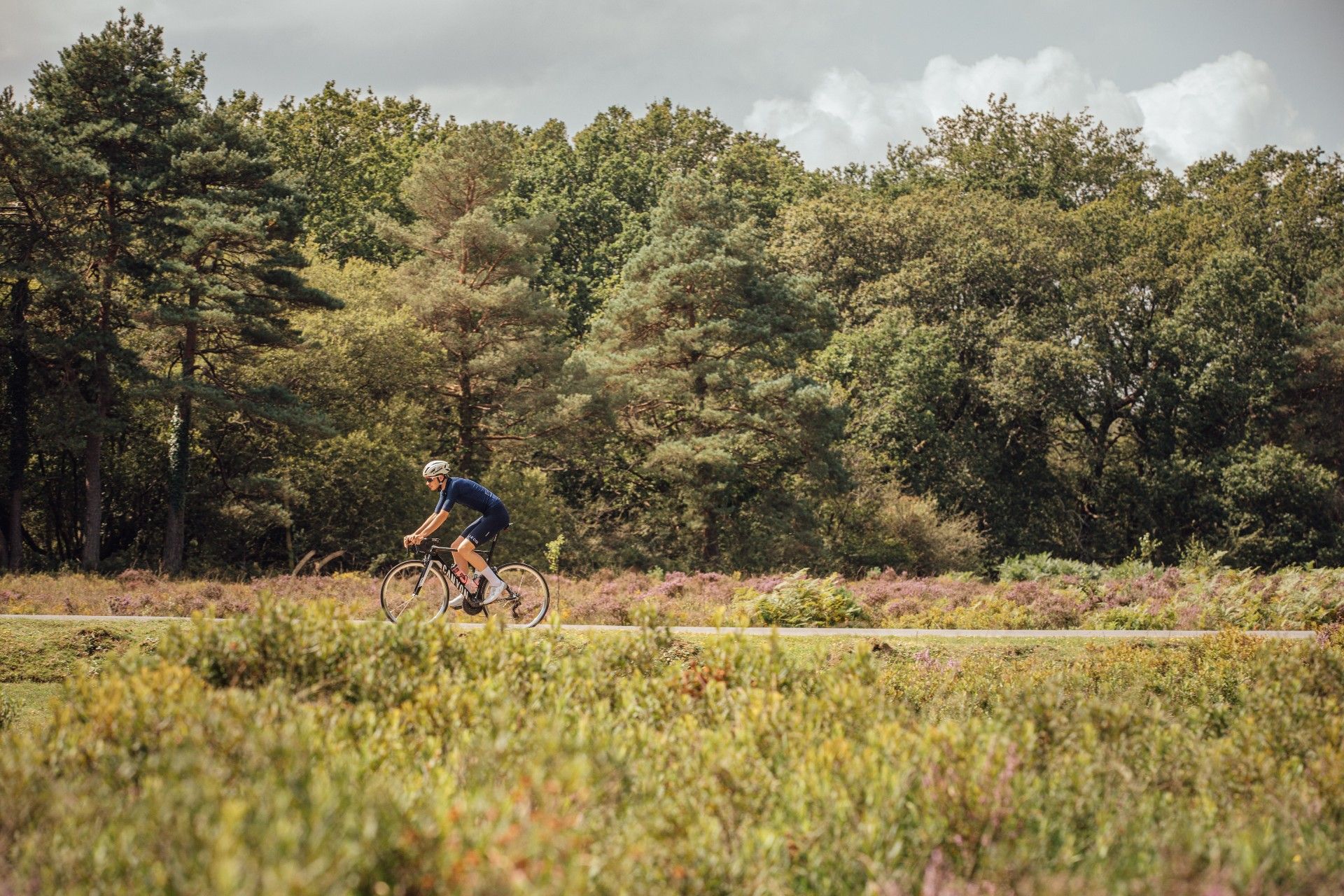
Top tips 100 mile ride success
Make sure to eat enough: The easiest way to scupper your chances of riding 100 miles, and feeling strong throughout, is underfueling. Have a good meal the night before with plenty of carbohydrates, start your day with a healthy breakfast (porridge is the cyclist's go to) and top up those hydration and carb levels throughout - you need to eat and drink every 30-45 minutes.
Start as you mean to go on: Don't go too fast out the gate, ride at a pace that feels sustainable, you can base this from the speed of your training rides - and if you feel good towards the end, ramp it up.
Ride with friends: The easiest way to inject joy into your ride is to complete it with some pals, you'll be able to motivate each other during training, too.
Check your bike fit: If you've not done so already, check in for a bike fit before you begin your training, and resist the urge to tinker - so that you complete your big ride on an optimum set up which your body is well used to
This is the part where most people mess up, so pay attention and take good notes. A proper endurance ride is a long-duration training ride done exclusively in Zone 2.
Performed correctly, Zone 2 is your all-day talking pace. It is the intensity at which you could ride for hours, and hold a conversation without huffing and puffing every third word.
Most amateur cyclists ride too hard all the time. Instead of sticking to Zone 2, they’ll ride harder into a headwind, and even harder up the steep climbs. But if you coast down the descents and go easy on the downhills, then your average power (or, effort level) ends up back in Zone 2 – so then everything works out, right?
Wrong. Breaking the Zone 2 barrier means that your body is suddenly producing much more lactate than before, and using fast-twitch muscle fibres rather than mostly aerobic, slow-twitch muscle fibres.
The benefits of Zone 2 training are: using primarily fat as a fuel source, improved aerobic capacity, increased enzyme production, and increased mitochondrial density. If all of that sounds far too science heavy, then the short version is that executing long Zone 2 rides improves your ability to ride for long periods of time. And when you’re training for a 100-mile sportive, there is nothing more important than your ability to ride for upwards of six hours.
Your structured plan for 100 mile success
The trickiest part of this advice is putting it all together. Intervals, Zone 2, progressive overload, Sweetspot…there are only so many hours in the week!
The key is to be efficient with your training and adhere to a structured cycling training plan lasting for at least 12 weeks before your goal event. This 12-week period will give you plenty of time to make the adaptations in training, rest accordingly, and come back stronger in time for your sportive.
When you start putting it all onto the calendar, you will see the puzzle pieces coming together. The hardest part is the execution, but more on that in a minute. First, here is an example training week in the lead-up to a 100-mile sportive.
- Monday: rest
- Tuesday: Sweet Spot Over/Unders
- Warm-up: 10min Zone 1 building to Zone 2
- Main Set: (Power based) 4x3min at 89% FTP / 2min at 94% FTP with 2min recovery (<55% FTP), (HR-based) 4x3min at 93% Threshold Heart Rate (THR) / 2min at 95% THR with 2min recovery (80% THR), (RPE-based) 4x3min at a 6 out of 10 / 2min at a 7 out of 10 with 2min recovery (1 out of 10)
- Cool-down: 10min Zone 1
- Wednesday: 30-60min recovery ride (<60% FTP or <80% THR)
- Thursday: Big-gear strength intervals
- Warm-up: 10min Zone 1 building to Zone 2
- Main Set: (Power based) 5x5min at 55-60rpm at 85% FTP with 2min recovery (<55% FTP), (HR-based) 5x5min at 55-60rpm at 91% THR with 2min recovery (80% THR). (RPE-based) 5x5min at 55-60rpm at a 5 out of 10 with 2min recovery (1 out of 10)
- Cool-down: 10min Zone 1
- Friday: 30-60min recovery ride (<60% FTP or <80% THR)
- Saturday: Zone 2 endurance ride (3-4 hours at 55-75% FTP)
- Warm-up: 10min Zone 1 building to Zone 2
- Main Set: (Power based) 3-4 hours at 55-75% FTP, (HR-based) 3-4 hours at 81-89% THR, (RPE-based) 3-4 hours at a 2-3 out of 10
- Cool-down: 5min Zone 1
- Note: Your heart rate will naturally rise as you fatigue over the course of this ride. So if you are training based off of HR, start your long ride with the first 1-2 hours at 81% of THR rather than 89% THR.
- Sunday: 90min recovery ride (<60% FTP or <80% THR)
Remember to rest every fourth week (i.e. three weeks of training followed by one rest week, on repeat) so that your body can adapt to the training and come back stronger. Every time you skip a rest week, you are inching closer and closer to burnout, so be careful if you opt for an overload period rather than rest.
One week to 10 days out from your 100-mile sportive, you should begin a taper period, which is similar to a long rest week. In essence, you reduce your training volume by 30-50%, whilst maintaining the same amount of high-intensity interval training. Do your last, long Zone 2 ride 5-7 days before the sportive, and then do short and easy rides until the event.
If you execute the plan to the best of your ability – putting in the miles, finishing the intervals, and resting when necessary – you will toe the start line with excitement rather than trepidation. Remember to eat and drink every 30-45 minutes, and you will be well on your way to smashing your 100-mile sportive.

Thank you for reading 10 articles this month* Join now for unlimited access
Enjoy your first month for just £1 / $1 / €1
*Read 5 free articles per month without a subscription

Join now for unlimited access
Try first month for just £1 / $1 / €1
Zach is a freelance writer, the owner of ZNehr Coaching, and an elite-level rider in road, track, and Zwift racing. He writes about everything related to bikes, from product reviews and advertorials, to feature articles and pro data analytics in Power Analysis articles. You can find his articles everywhere from Cyclingnews and TrainingPeaks, to Velonews, CyclingTips, and Bicycle Guider.
After earning a Bachelor’s Degree in Exercise Science at Marian University-Indianapolis, Zach discovered a passion for writing that soon turned into a full-fledged career. In between articles, Zach spends his time working with endurance athletes of all levels at ZNehr Coaching. After entering cycling at age 17, Zach went on to have a wonderful road racing career that included a Collegiate National Time Trial Championship and a 9th place finish at the US Pro National Time Trial Championships. Nowadays, Zach spends most of his ride time indoors, where he races for NeXT eSport pb Enshored in the Zwift Racing League – Premier Division.
-
-
 Closing the gap: David Gaudu emerges from Paris-Nice more confident than ever before
Closing the gap: David Gaudu emerges from Paris-Nice more confident than ever beforeThe Groupama-FDJ rider finished second overall at the Race to the Sun, but gained more than just the result
By Adam Becket • Published
-
 Goodbye lime: We need to talk about the Tour de France green jersey
Goodbye lime: We need to talk about the Tour de France green jerseyThere's change afoot at ASO's French races, with the combativity colour also undergoing a revamp
By Adam Becket • Published
-
 I learnt how to ride a bike as an adult and you can too
I learnt how to ride a bike as an adult and you can tooLearning how to ride a bike as an adult can feel daunting, but it doesn't have to be
By Hannah Bussey • Published
-
 How to lose weight cycling: Six essential tips
How to lose weight cycling: Six essential tipsIf you're looking to lose weight cycling, here is a quick guide to reduce that number on the scales to improve your riding
By Cycling Weekly • Published
-
 Power to weight ratio: watts per kilogram explained and how to boost yours
Power to weight ratio: watts per kilogram explained and how to boost yoursUnless you only ever ride on pancake-flat surfaces, improving your power-to-weight ratio is a must. Andrew Hamilton explains why and how
By Cycling Weekly • Published
-
 Cycling training plans: for beginners, intermediates and racers
Cycling training plans: for beginners, intermediates and racersGet into cycling, get fitter, or ride faster with our cycling training plans
By Anna Marie Abram • Last updated



